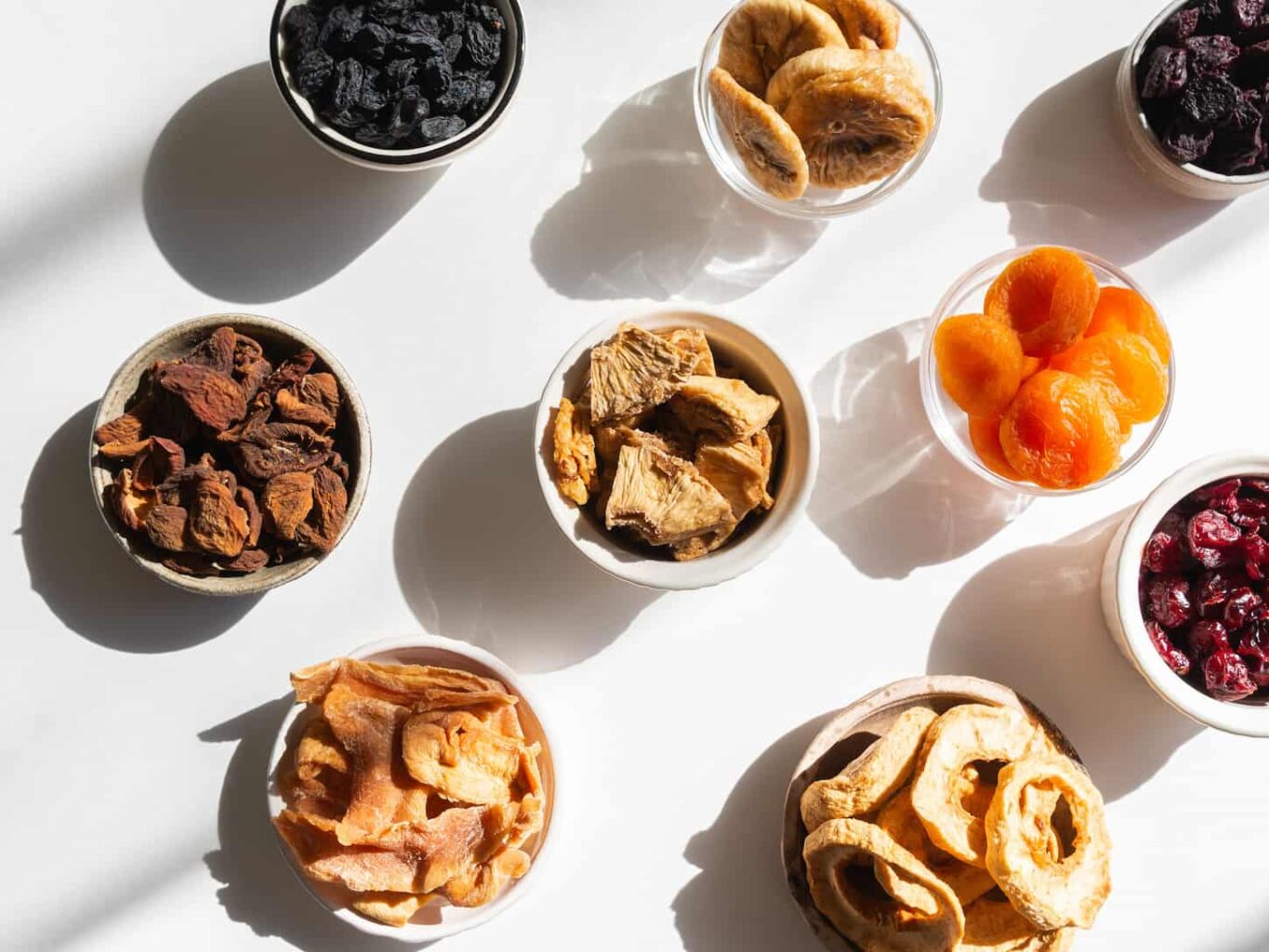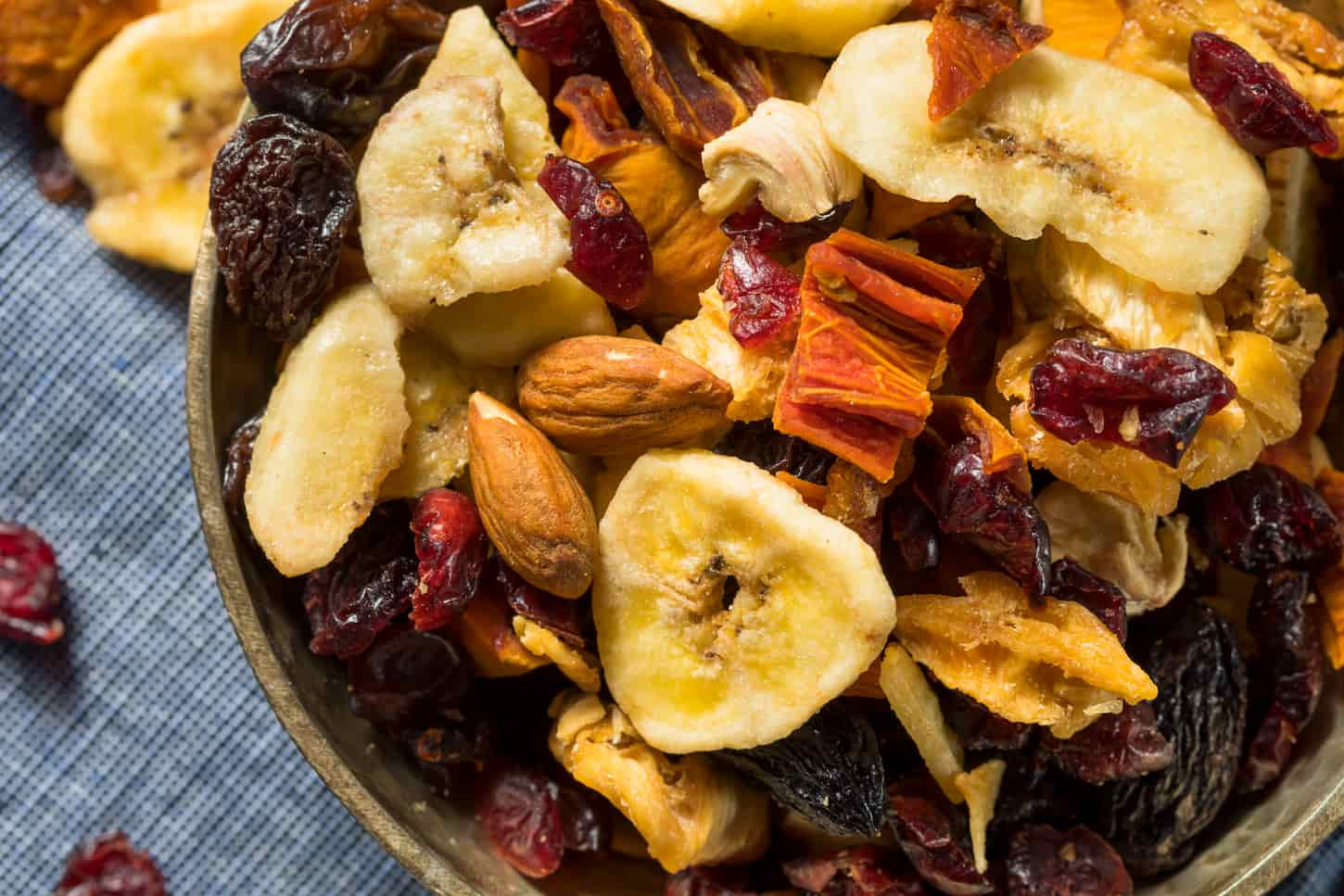Freeze-drying is a great way to store food because once it has gone through this process, we can keep it for years in the pantry. Not only does it last for ages, but it also retains its taste and texture far better than other food preservation methods. But can freeze-drying over-dry food?
Freeze-drying shouldn’t over-dry food. It aims to remove as much water content from food as possible. However, food cut too large before freeze-drying may not rehydrate well and may have an over-dried texture in the middle when reconstituted.
Never fear, though; we’ve got your back. Read on for some tips we’ve learned with the benefit of a little freeze-drying experience.

Can a Freeze-Dryer Over-Dry Food?
In theory, freeze-drying shouldn’t over dry food. It aims to remove as much water content from food as possible. If the food is in pieces that are too large, they may not rehydrate well and may be dry in their middle.
That said, freeze-drying is also a more technical process than other means of preservation (such as dehydration or canning). A few common issues can happen when we freeze-dry food, such as over-filling the dryer or over-drying the food.
One of the best tips we’ve received about freeze-drying is to ensure that we cut the food into small chunks. This is an essential part of the process, as it ensures that the food will dry nicely and helps when we rehydrate the food.
My best tip to avoid dry middles in reconstituted freeze-dried foods: keep foods being freeze-dried as small as possible – I use 1 inch as the max thickness for ideal results.
Large chunks of food will take too long for all the water to be extracted and will also be difficult to rehydrate. When foods don’t rehydrate properly, they may be dry and crunchier than expected in texture – giving the effect of being over-dry.
As a general rule, the greater the surface area of the food, the better this process will work. Keeping foods in small chunks is always the best technique for freeze-drying, regardless of which food we’re preserving.
Want to read more about how to prepare food for freeze-drying? Read this article I wrote: How to Freeze Dry and Store Your Favorite Foods: Guide with Pictures.
Can a Freeze-Dryer Over-Freeze food?
A freeze-dryer can spend too much time freezing food if the wrong settings are selected or if the food is left too long in the machine. This uses more power than is needed and can mean food won’t freeze-dry properly.
To avoid over-freezing, bear these things in mind; one mistake that’s easy to make is selecting the wrong settings on the freeze-dryer.
Most machines will offer the chance to pre-freeze foods in a regular freezer first; then, we can select the ‘pre-frozen’ setting on the device. This is an excellent option, as conventional freezers are much bigger and quicker than freeze-dryers.
Then, the freeze-dryer can focus on the drying part of the process, which saves a lot of time in the long run. That’s especially true if we are planning on doing big batches.
However, if we have pre-frozen the food, we’ll need to make sure we select the pre-frozen setting on the machine. Otherwise, the machine will spend more time than necessary and over-freeze the food.
Another way that we can over-freeze food is by leaving it too long in the machine after it’s finished. In this case, the food can reabsorb moisture from the air and even begin to refreeze.
Check out this information below to learn how to keep from overdoing freeze-drying.

How to Know if Freeze-Dried Food is Overdone
If the food doesn’t have a great ‘crack’ sound when snapped in half, it may have been over-frozen or left too long in the dryer where it can reabsorb moisture. In this case, the food will either be cold and frozen or have a soggy texture that stops it from snapping correctly.
A good test to check if freeze-dried food is dried correctly is to take one piece and try to break it in your hand. A properly freeze-dried piece of food should break with a nice, dry snap.
I like to take food out after a warming cycle to minimize the chance of condensation on the food (like when water appears on the outside of a cold glass of water). So if you use that trick, the food should also be warm-ish, or at least room temperature. It should not be cold.
In addition to leaving the food too long in the dryer, several other problems can prevent the freeze-dryer from working correctly, such as an improper vacuum seal, faulty pump, build-up of oil, or simply putting too much food inside in one go.
Thankfully, here at Backyard Homestead HQ, we’ve got plenty of articles that can guide you to freeze-drying different foods and troubleshoot some common problems. Check out our complete freeze-drying section right here.
What Happens to Food if Left in a Freeze-Dryer for Too Long?
Two things happen to food if left in a freeze-dryer too long – first, it may absorb moisture from the air, and secondly, it will start to refreeze. For best results, remove the food from the freeze-dryer as soon as the machine stops running.
The freeze-drying process is a great way to remove water content from food, but once it’s ready, we’ll need to make sure that no more water gets back in. Getting that food into a dry, airtight container will keep any pesky moisture out is vital.
We must ensure we’re prepared for the end of the freeze-drying process. Thankfully, most home freeze-dryers are fully automated and will tell us how long the process will take. You can also add time to the end of a cycle if you’d prefer to avoid getting a load of food finished at 3 AM (I’ve totally done that, so no judgment here!).
When these machines are done, an alarm will go off. Then, the food will need to be put in an airtight container without delay! I find the machine’s built-in alarm to be insufficient. So, I ask my electronic friends, Alexa or Google, to set a louder alarm for me.
In suitable conditions, freeze-dried food can stay fresh for decades. These conditions aren’t tricky to manage – as long as the food’s got an airtight seal and no moisture, we can leave it in the pantry without refrigeration.
However, if we don’t manage to get to the food right away, it may end up reabsorbing some of the moisture or even refreezing. We’ll find it to be moist, cold, or squishy in this case.
As we’ve said above, a good test to check that the food has properly freeze-dried is to try breaking a piece. A dry, satisfying crack means the food is ready and set to be stored.
Don’t panic if you’ve accidentally left the food for too long in the freeze-dryer. All you need to do is set the machine to restart the process and get to it more quickly next time.

Key Takeaways and Next Steps
A freeze-dryer is a wonderful thing to have – and it will help us preserve our food easily and safely. Is it possible to over-dry food in a freeze-dryer? Well, it is – but as long as we’re careful and follow the instructions, everything should be alright.
It’s comforting to know that we can test the food to make sure it’s properly freeze-dried by snapping it in half. If we hear a satisfying ‘crack,’ then all is well. The process must be redone for best results if it’s squishy and moist.
Freeze-drying is a lot of fun, and it’s a valuable resource for a family to have. I’ve listed some articles for further reading on freeze-drying techniques here:
- Are Freeze-Dried Foods Just as Nutritious? Let’s See!
- How to Freeze Dry and Store Your Favorite Foods: Guide with Pictures
- How to Safely Store Freeze-dried Foods in Mason Jars (vacuum sealer)
They’re all great resources (I admit to some bias, as I did write them), and they’re all packed full of information to help you on your food storage journey. Happy freeze-drying!
Resources
Learning from your own experience is essential, but learning from others is also intelligent. These are the sources used in this article and our research to be more informed as homesteaders.
- Adamant, Ashley. “How to Freeze Dry Food at Home.” Practical Self Reliance, 26 Apr. 2022, practicalselfreliance.com/freeze-dry-food.
- Harvest Right. “Freeze Drying vs Dehydrating.” Harvest Right | Home Freeze Dryers | Freeze Dried Food Storage, 26 Aug. 2021, harvestright.com/freeze-drying-vs-dehydrating.
- Neverman, Laurie. “11 Freeze Drying Mistakes to Avoid for Best Storage Quality.” Common Sense Home, 24 Feb. 2022, commonsensehome.com/freeze-drying-mistakes.
- Weatherman, Chris. “Freeze Drying.” Survival Dispatch, 2 Mar. 2020, survivaldispatch.com/freeze-drying/.
